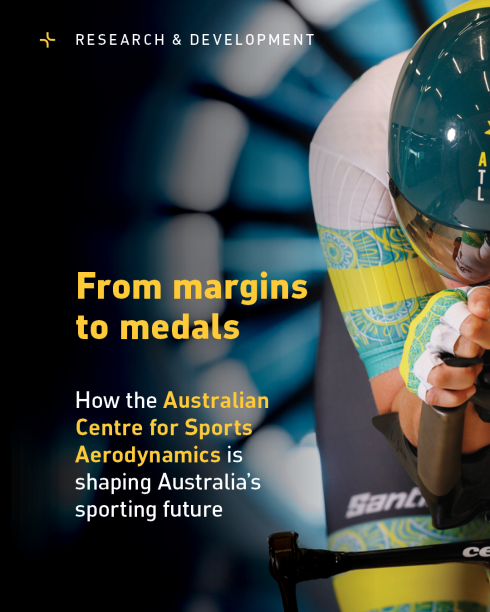
Flexibility in action
How a culture of support enables Nickoletta Flannery to balance design life with elite sport
At Hames Sharley, success isn’t just about what happens in the studio – it’s about life outside, too.
The arena of sport and recreational architecture and urban design is a rapidly changing environment that involves a diverse range of facilities with people and the wider community at the heart of the design.
Whether designing a community sports and leisure facility or a world class stadium, the importance of connection to the community is fundamental to a facility’s performance. We understand that sporting and recreation facilities contribute to the vitality of the communities they serve, and we seek for all facilities to actively engage with their surroundings, creating a precinct-wide solution where social infrastructure underpins development and growth within the wider community.

The Australian Centre for Sports Aerodynamics (ACSA) offers something rare: the opportunity to extract real-world performance gains from aerodynamic refinement and advanced modelling, and not just for cyclists. It’s time that sporting organisations, coaches, and athletes across a range of disciplines recognise that ACSA is not merely a wind tunnel, but a performance partner.

Australia is an urban coastal nation – we love the water and our well-known fascination with the beach and water is part of our cultural DNA. But despite the strong culture around water, recent figures reveal that drowning deaths are increasing. The infrastructure of public swimming pools is also fast approaching its use-by-date, meaning we’re falling short in meeting the contemporary and anticipated future needs of our communities. However, we believe design can help.

As Australia ramps up to host the 2026 Commonwealth Games in Melbourne and the 2032 Olympics in Brisbane, new and existing multi-city sports infrastructure will cater for athletes competing and millions of spectators watching on the world stage. But what will happen to these spaces afterwards? And how can we learn from them to create healthy and thriving communities for the future?

Mental health issues can hit you out of nowhere. It could be an ordinary day, doing something you’ve done a million times before and then… WHAM. Out of nowhere, a panic attack comes and knocks the wind right out of you. Rendering you unable to move. Unable to breathe. And you have no idea what’s happening, let alone why.